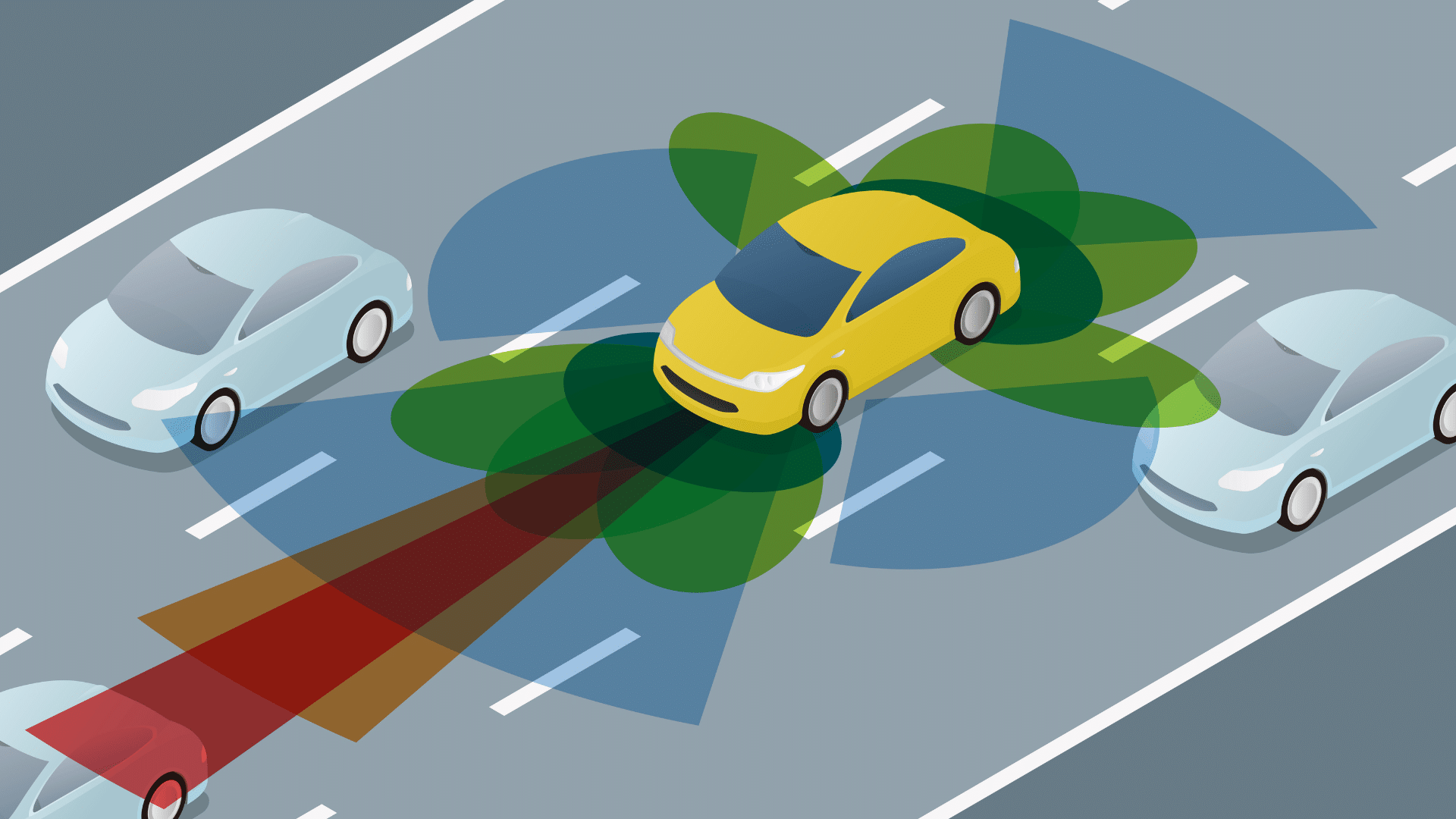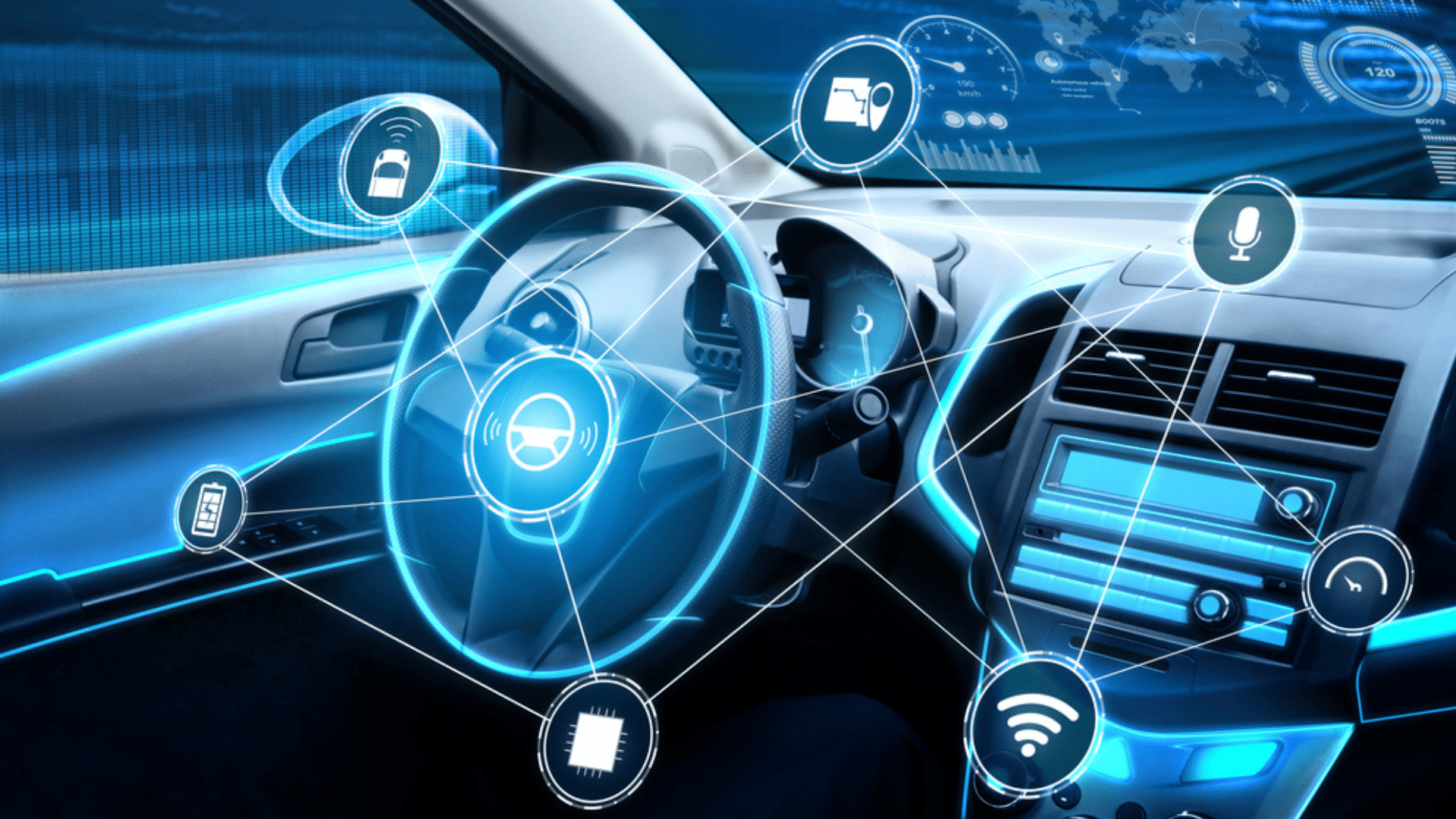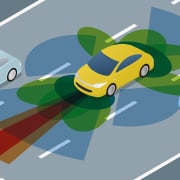Different Types of ADAS Sensor

Introduction to ADAS Autonomous Vehicle Sensors
Overview
Advanced Driver Assistance Systems (ADAS) lead the road to driverless cars and heightened security. ADAS counts on the vehicle’s cutting-edge sensors to collect data from its surroundings. These ADAS sensors evaluate convoluted environmental inputs to help cars make real-time judgments. radar, lidar, cameras, and ultrasonic sensors all have specific characteristics that, when combined, constitute the backbone of ADAS functions.
The Essence of Sensing
Multiple ADAS sensors let a vehicle move safely. For example:
- Radar sensors provide accurate speed and distance data in lousy weather. It is essential for adaptive cruise control and collision avoidance systems.
- Camera sensors can visually read road signs and markings for traffic sign recognition and lane departure alerts, thanks to their high image resolution.
- For obstacle detection and navigation, LiDAR sensors’ precise 3D mapping of surroundings is important for autonomous vehicles sensors.
- Ultrasonic sensors for parking assistance detect nearby objects using sound waves.
Don’t worry; we will discuss these ADAS sensors in more detail in the following section.
According to the August 2016 Traffic Safety Facts Research Note by the NHTSA (National Highway Traffic Safety Administration), 35,092 people died in U.S. collisions in 2015. The greatest percentage gain in over 50 years was 7.2%. Research found that 94% of the incidents were caused by human error, the remainder by environmental and mechanical faults.
Yet, the sensors make a complete sensing suite for better vehicle awareness and response and lower accident risk. ADAS systems attain situational awareness that resembles human sensory abilities but with a speed and precision that exceeds human reaction times while integrating data from these sources. It marks a milestone in automotive safety technology.
Exploring the Types and Applications of ADAS Sensors

ADAS (Advanced Driver Assistance Systems) rely on a diverse sensor suite that enables vehicles to perceive their environment, make real-time decisions, and operate more safely. Each sensor technology contributes unique strengths and plays a critical role in different driving scenarios. Below is a comprehensive breakdown of the core ADAS sensor types, including how they work, what they’re used for, and their performance strengths and limitations.
Ultrasonic Sensors
Ultrasonic sensors are foundational components in many ADAS systems, particularly for short-range object detection.
How It Works
These sensors emit high-frequency sound waves that reflect off nearby objects. By measuring the time it takes for the echo to return, the system calculates the distance to obstacles. This method works well in tight, confined environments where visual systems may be less effective.
Applications
- Parking assistance systems (parallel and reverse parking)
- Close-range obstacle detection
- Monitoring vehicle-to-curb distances
- Low-speed collision prevention
Strengths
- Highly effective at close range
- Performs reliably in low-light or nighttime conditions
- Compact and cost-efficient
Limitations
- Ineffective at longer ranges or high speeds
- Accuracy can be reduced in heavy rain, snow, or when facing soft materials like foliage or fabric
- Provides limited object detail compared to optical sensors
Camera Sensors
Camera sensors serve as the “eyes” of the vehicle, providing rich visual data essential for object classification and contextual understanding.
How It Works
Camera sensors capture real-time video and images of the vehicle’s surroundings. These visuals are processed using advanced computer vision and machine learning algorithms to detect road signs, lane markings, pedestrians, and vehicles.
Applications
- Lane departure warning and lane-keeping assistance
- Traffic sign recognition
- Forward and rear collision detection
- Pedestrian detection and automatic emergency braking
- 360-degree surround view and rearview monitoring
Strengths
- High image resolution enables detailed object recognition
- Essential for interpreting visual cues (e.g., traffic signs, hand gestures, turn signals)
- Enhances driver comfort with clear visual feedback
Limitations
- Susceptible to low visibility conditions (e.g., darkness, glare, fog)
- Performance may be compromised by dirt, snow, or raindrops on the lens
- Limited depth perception unless used with stereo camera setups
Radar Sensors
Radar is one of the most widely used ADAS sensor types, known for its reliability in adverse weather and fast-moving scenarios.
How It Works
Radar sensors emit radio waves that reflect off objects. The system then calculates object distance and speed based on the time and frequency shift of the returning signal (Doppler effect). This makes radar ideal for detecting relative motion.
Applications
- Adaptive cruise control
- Blind-spot monitoring
- Lane-change assist
- Rear cross-traffic alert
- Collision avoidance and emergency braking
Strengths
- Highly effective in all weather conditions, including rain, fog, and snow
- Excellent at measuring the speed and distance of multiple moving objects
- Long detection range (can exceed 150 meters in some systems)
Limitations
- Limited resolution for distinguishing small or closely spaced objects
- Cannot easily identify object types (e.g., pedestrian vs. cyclist) without sensor fusion
- May experience interference in dense urban environments with signal reflection
LiDAR Sensors
LiDAR technology adds 3D depth and detail to the ADAS sensor suite, making it a critical enabler for fully autonomous driving.
How It Works
LiDAR (Light Detection and Ranging) uses laser beams to scan the environment. By measuring the time it takes for the laser pulses to reflect back from surrounding objects, the system creates a high-resolution 3D map of the area.
Applications
- 3D environmental mapping
- Object classification and tracking
- Path planning for autonomous driving
- Pedestrian and cyclist detection in complex environments
Strengths
- Exceptional depth perception and spatial resolution
- Capable of detecting small, low-profile, or partially obscured objects
- Enables precise modeling of the vehicle’s surroundings
Limitations
- Expensive compared to other sensor types
- Performance can be affected by rain, fog, or intense sunlight
- Larger size and higher power consumption (though solid-state LiDAR is improving this)
GPS Navigation
While often overlooked as a “sensor,” GPS is fundamental for route guidance and global positioning, especially in semi- and fully autonomous systems.
How It Works
GPS systems use signals from a constellation of satellites to determine the vehicle’s precise location, speed, and direction. ADAS systems often integrate GPS data with other sensors to provide accurate positioning and context-aware navigation.
Applications
- Real-time navigation and turn-by-turn directions
- Dynamic rerouting based on traffic conditions or road closures
- Autonomous vehicle path planning and geofencing
- Localization for highway or city driving
Strengths and Limitations
Strengths
- Provides global coverage and consistent tracking
- Supports macro-level navigation and strategic route planning
- Useful for integrating map data and topographic context
Limitations
- Lower accuracy in urban canyons, tunnels, or indoor parking lots
- Signal delays or multipath interference can affect precision
- Needs enhancement with other sensors (e.g., IMUs, LiDAR) for lane-level accuracy
Advanced ADAS Solutions for Enhanced Vehicle Safety and Navigation
Our ADAS sensors solution, which focuses on autonomous vehicle sensors, exhibits FIC’s passion for automobile safety. Using ultrasonic, radar, lidar, and video sensors, we provide ADAS systems that boost alertness and vehicle responsiveness to shifting circumstances.
We use 24Hz radar for blind-spot detection and 77Hz for adaptive cruise control to cover the whole car. Our lidar systems can accurately classify objects in 3D for autonomous navigation. With these sensors, we improve safety, economy, and driving delight for autonomous driving. We develop disruptive designs and technology that raise car security standards in conjunction with premier automakers. Click here to learn more about FIC’s ADAS offerings.





